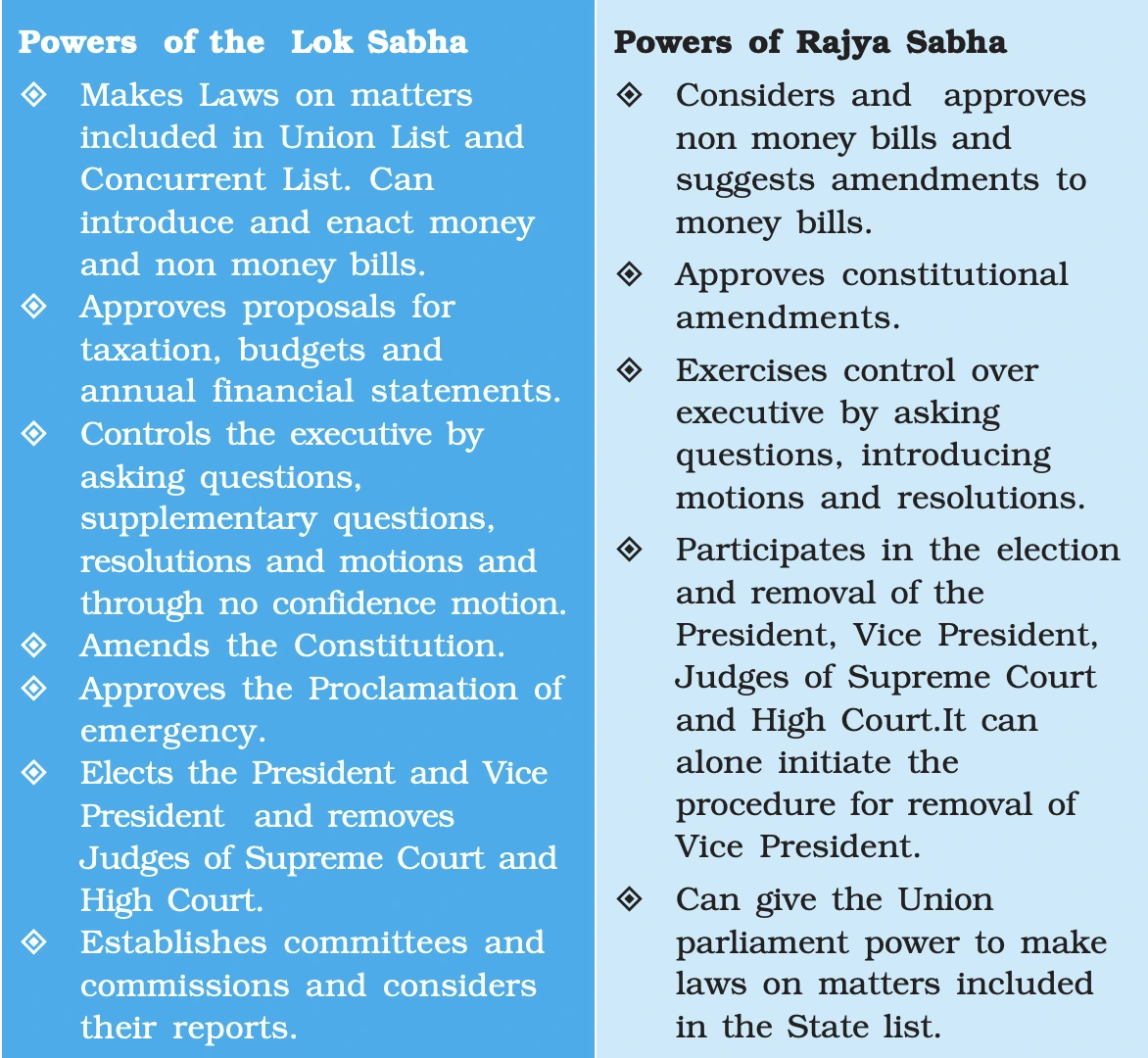![]() 28 Nov 2023
28 Nov 2023
Houses of Parliament Overview: Indian parliaments consist of two houses, the Lok Sabha (House of the People) and the Rajya Sabha (Council of States). The Lok Sabha is the lower house, consisting of directly elected members who represent various constituencies across the country. Its members are elected by the people in general elections. The Rajya Sabha is the upper house, comprising members who are not directly elected by the public but are chosen by the elected members of various State Legislative Assemblies.

Limited Powers of Rajya Sabha
|
Conclusion
The Houses of Parliament, specifically Lok Sabha and Rajya Sabha, play a crucial role in shaping India’s legislative landscape. Their distinct powers, from handling money bills to ensuring accountability, contribute to a robust system of governance and decision-making within the parliamentary framework.
<div class="new-fform">
</div>